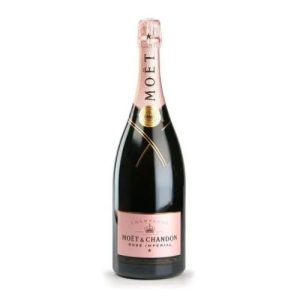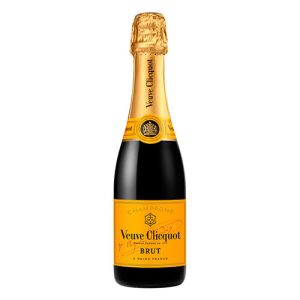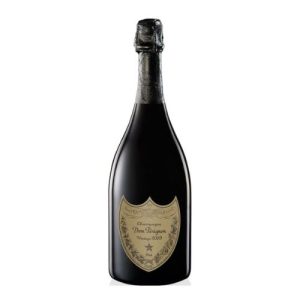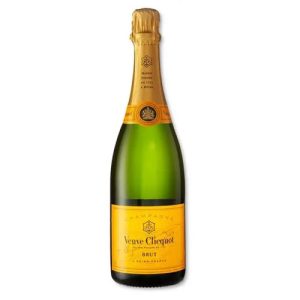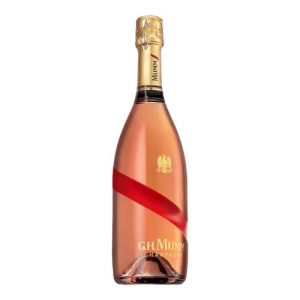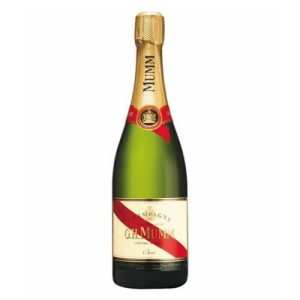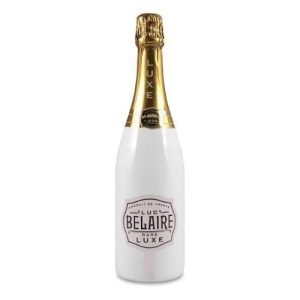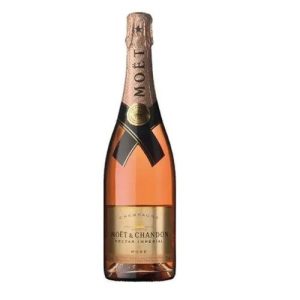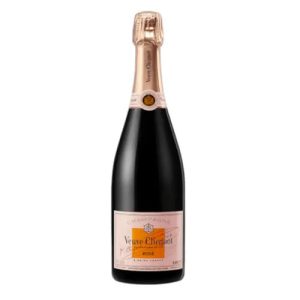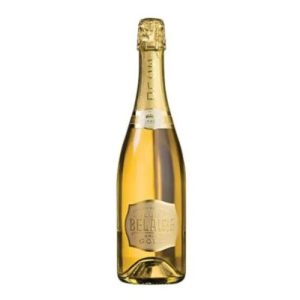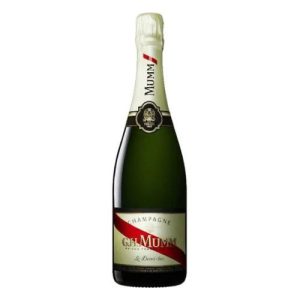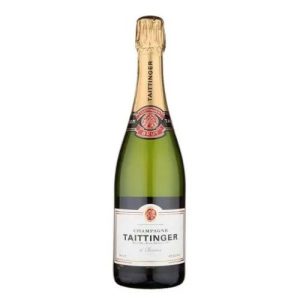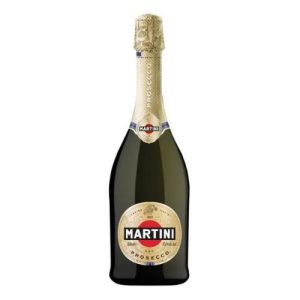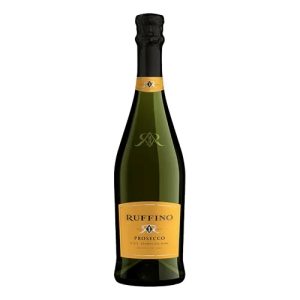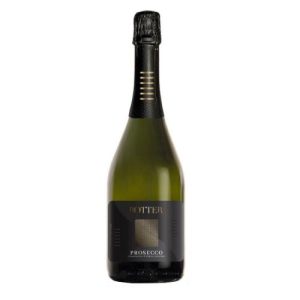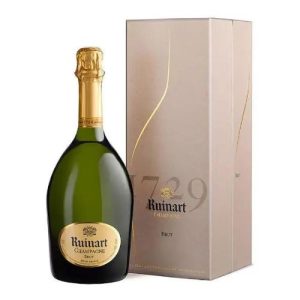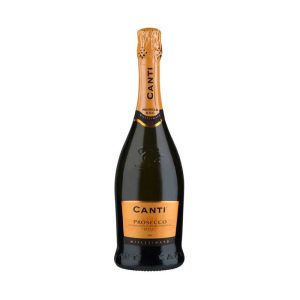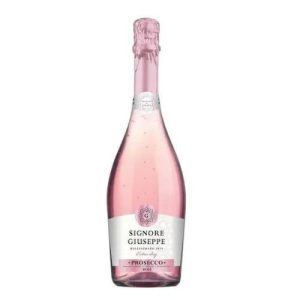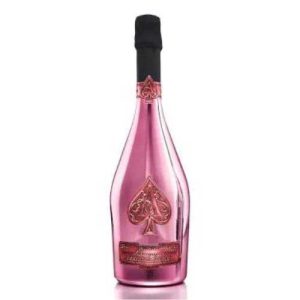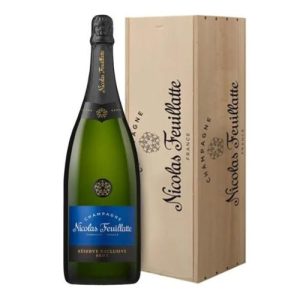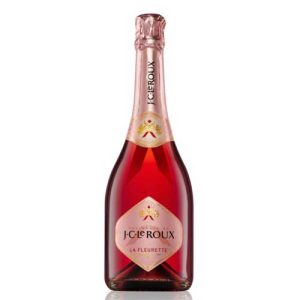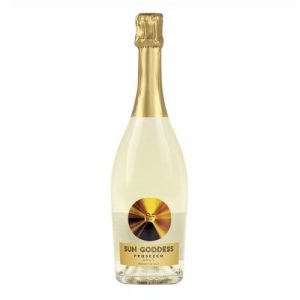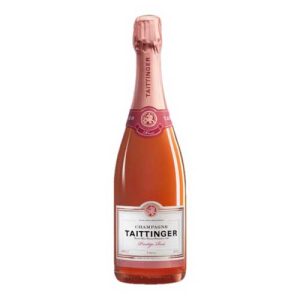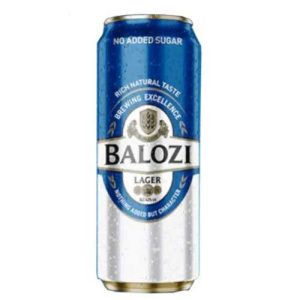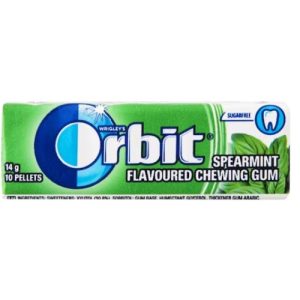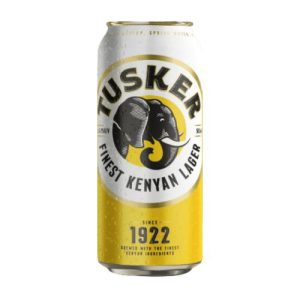Order your Champagne and Prosecco from the best prosecco and champagne prices available on Frontdoor Kenya’s liquor store. We have Dom Perignon Vinatge 2009, Veuve Clicquot Brut, and Moet Chandon among many more collections of premium champagnes in Nairobi. Order your champagne drink now and get it delivered to your doorstep in minutes with cheers!
Difference between Champagne, Prosecco and Sparkling Wine
Champagne is primarily made with Chardonnay grapes, while Prosecco with Glera grapes, and Sparkling Wine with any wine producing grape.
While Champagne, Prosecco and Sparkling wine tend to be a confusing concept to most liquor fans, there are four features that clearly tell them apart. These include the origin of the liquor, the production process, type of grapes used and the flavor profile for each drink. Let’s unpack each of these features below!
-
Champagne: This sparkling wine must originate from the Champagne region in France. The area’s cool climate and chalky soil contribute to the wine’s unique character. Only wines from this region can legally be called “Champagne.”
-
Prosecco: Prosecco is strictly from the Veneto and Friuli Venezia Giulia regions in Italy. Its geographical indication ensures that the wine reflects the terroir of these specific Italian locales, known for their sunny hills.
-
Sparkling Wine: This term encompasses any effervescent wine from around the globe, not bound by the stringent geographical rules of Champagne or Prosecco. It can come from regions like California, Spain (Cava), or Australia, each adding its local touch.
Champagne: The primary grape varieties allowed in Champagne are Chardonnay, Pinot Noir, and Pinot Meunier. Most Champagnes are a blend of these grapes, though some styles use specific combinations:
- Blanc de Blancs: Made exclusively from Chardonnay grapes, producing elegant, crisp wines
- Blanc de Noirs: Made from Pinot Noir and/or Pinot Meunier, resulting in fuller-bodied wines
- Rosé Champagne: Can be made by either adding red wine or allowing brief skin contact with Pinot Noir or Pinot Meunier
Prosecco: Prosecco is primarily made from the Glera grape (formerly known as Prosecco grape), which must comprise at least 85% of the blend. The remaining 15% can include local varieties like Verdiso, Bianchetta Trevigiana, Perera, or international varieties like Chardonnay and Pinot Grigio. Glera produces light-bodied wines with fresh apple, pear, and floral notes.
Other Sparkling Wines:
- Cava (Spain): Primarily uses Macabeo, Xarel-lo, and Parellada grapes
- Franciacorta (Italy): Uses Champagne varieties – Chardonnay and Pinot Noir
- Crémant (France): Grape varieties vary by region but often include local varieties alongside Chardonnay
- New World Sparkling: Can use any grape varieties, though many follow the Champagne model with Chardonnay and Pinot Noir
Champagne: The creation of Champagne represents the pinnacle of sparkling wine production. At its heart lies the traditional method, or “méthode champenoise,” where artistry meets patience. This process begins with base wines, typically crafted from Chardonnay, Pinot Noir, and Pinot Meunier grapes grown in the chalky soils of France’s Champagne region. What makes Champagne truly special is its second fermentation, which takes place within each individual bottle. Winemakers add a precise mixture of yeast and sugar, then seal the bottles, allowing them to age on their lees (dead yeast cells) for at least 15 months, though premium Champagnes often age for several years. This extended contact with lees develops those distinctive notes of brioche, toast, and nuts, while creating the famously fine, persistent bubbles that Champagne is known for.
Prosecco: Prosecco takes a more modern, efficient approach to sparkling wine production through the tank method, also known as the “Charmat method.” Made primarily from the Glera grape in Italy’s Veneto region, Prosecco showcases the fresh, fruity character of its base wine. Unlike Champagne, Prosecco’s second fermentation occurs in large pressurized stainless steel tanks. This method preserves the delicate floral and fruit aromas of the Glera grape while creating larger, softer bubbles that give Prosecco its characteristic light and approachable personality. The entire process typically takes just 30-90 days, resulting in a wine that captures the essence of Italian joie de vivre with its crisp apple, pear, and citrus notes.
Sparkling Wine: Sparkling wine encompasses a broader category of wines that can be produced using various methods, depending on the region and desired style. While some high-quality sparkling wines follow the traditional method used in Champagne, others might use the tank method or the transfer method. The transfer method begins like the traditional method with bottle fermentation but then transfers the wine to a tank for filtering before rebottling. This offers a middle ground, creating wines with some of the complexity of traditional method wines but produced more efficiently.
.
Champagne: The bubbles in Champagne are often described as the finest and most elegant in the sparkling wine world. These tiny, precise bubbles rise slowly and steadily through the glass in delicate streams. Their small size is a direct result of the traditional method, where the long aging process under pressure allows for better integration of carbon dioxide into the wine. When you pour Champagne, you’ll notice these bubbles form consistent, vertical chains – often called ‘perlage’ – that persist for an extended time. The mousse (foam) on top is creamy and refined, creating a gentle, mousse-like texture on the palate that feels sophisticated rather than aggressive.
Prosecco: Prosecco’s bubbles tell a different story. They tend to be larger and more exuberant than those found in Champagne, creating a more playful appearance in the glass. These bubbles rise more quickly and can feel slightly more explosive on the palate. Due to the tank method’s shorter production time, the carbon dioxide isn’t as deeply integrated into the wine, resulting in bubbles that are more pronounced but generally less persistent. The mousse tends to be lighter and fluffier, often dissipating more quickly than in Champagne. This creates a lighter, more casual drinking experience that many find immediately appealing and refreshing.
Sparkling Wine: The bubble characteristics in other sparkling wines can vary significantly depending on the production method used. Those made using the traditional method will more closely resemble Champagne’s fine, persistent bubbles. Sparkling wines made using the tank method will show similarities to Prosecco’s larger, more vigorous bubbles. Those produced using the transfer method often display bubble characteristics that fall somewhere in between – not quite as fine as traditional method wines, but more refined than those made entirely in tanks. The pressure level in the bottle (measured in atmospheres) also plays a crucial role in determining bubble size and persistence, with higher-pressure wines generally showing finer, more persistent bubbles.
Champagne: The bubbles in Champagne are often described as the finest and most elegant in the sparkling wine world. These tiny, precise bubbles rise slowly and steadily through the glass in delicate streams. Their small size is a direct result of the traditional method, where the long aging process under pressure allows for better integration of carbon dioxide into the wine. When you pour Champagne, you’ll notice these bubbles form consistent, vertical chains – often called ‘perlage’ – that persist for an extended time. The mousse (foam) on top is creamy and refined, creating a gentle, mousse-like texture on the palate that feels sophisticated rather than aggressive.
Prosecco: Prosecco’s bubbles tell a different story. They tend to be larger and more exuberant than those found in Champagne, creating a more playful appearance in the glass. These bubbles rise more quickly and can feel slightly more explosive on the palate. Due to the tank method’s shorter production time, the carbon dioxide isn’t as deeply integrated into the wine, resulting in bubbles that are more pronounced but generally less persistent. The mousse tends to be lighter and fluffier, often dissipating more quickly than in Champagne. This creates a lighter, more casual drinking experience that many find immediately appealing and refreshing.
Sparkling Wine: The bubble characteristics in other sparkling wines can vary significantly depending on the production method used. Those made using the traditional method will more closely resemble Champagne’s fine, persistent bubbles. Sparkling wines made using the tank method will show similarities to Prosecco’s larger, more vigorous bubbles. Those produced using the transfer method often display bubble characteristics that fall somewhere in between – not quite as fine as traditional method wines, but more refined than those made entirely in tanks. The pressure level in the bottle (measured in atmospheres) also plays a crucial role in determining bubble size and persistence, with higher-pressure wines generally showing finer, more persistent bubbles.

Popular Champagne and Prosecco Varieties available in Frontdoor Kenya
| Product Name | Price(Ksh) | ABV(%) | Volume(ml) | Origin | Rating | In Stock |
|---|---|---|---|---|---|---|
| Armand De Brignac Brut | 54,000 | 12 | 750 | France | 4.5 | Buy Now |
| Armand De Brignac Rose | 54,000 | 12 | 750 | France | 4.5 | Buy Now |
| Belair Fantome Rose | 5,800 | 12 | 750 | France | 4.5 | Buy Now |
| Belair Gold | 5,600 | 12 | 750 | France | 4.5 | Buy Now |
| Belaire Luxe | 5,600 | 12 | 750 | France | 4.5 | Buy Now |
| Canti Prosecco | 2,500 | 12 | 750 | Italy | 4.5 | Buy Now |
| Charles Heidseck Brut | 8,500 | 12 | 750 | France | 4.5 | Buy Now |
| Dom Perignon Vinatge 2009 | 51,000 | 12 | 750 | France | 4.5 | Buy Now |
| J C Le Roux Le Domaine | 1,900 | 7.5 | 750 | South Africa | 4.5 | Buy Now |
| J.C. Le Roux La Fleurette | 1,900 | 7.5 | 750 | South Africa | 4.5 | Buy Now |
| J.C. Le Roux Le Domaine | 1,900 | 7.5 | 750 | South Africa | 4.5 | Buy Now |
| Moet & Chandon Ice Brut | 13,800 | 12 | 750 | France | 4.5 | Buy Now |
| Nederburg Cuvee | 1,900 | 10 | 750 | South Africa | 4.5 | Buy Now |
| Nicolas Feuillatte Reserve Brut | 10,433 | 12 | 750 | France | 4.5 | Buy Now |
| Nicolas Feuillatte Rose | 11,444 | 12 | 750 | France | 4.5 | Buy Now |
| Ruinart Brut | 15,200 | 12 | 750 | France | 4.5 | Buy Now |
| Taittinger Brut | 12,000 | 12 | 750 | France | 4.5 | Buy Now |
| Veuve Clicquot Brut | 13,200 | 12 | 750 | France | 4.5 | Buy Now |
| Perrier Jouet Grand Cru | 7,000 | 12 | 750 | France | 4.5 | Buy Now |
| Veuve Clicquot Rose | 18,000 | 12 | 750 | France | 4.5 | Buy Now |
| Botter Prosecco | 2,800 | 11 | 750 | Italy | 4.5 | Buy Now |
| Fantinel Prosecco | 2,100 | 11.5 | 750 | Italy | 4.5 | Buy Now |
| Martini Prosecco | 2,100 | 11.5 | 750 | Italy | 4.5 | Buy Now |
| Signore Giuseppe Prosecco Rose | 2,400 | 11 | 750 | Italy | 4.5 | Buy Now |
| Sun Goddess Prosecco Brut | 3,099 | 11 | 750 | Italy | 4.5 | Buy Now |

